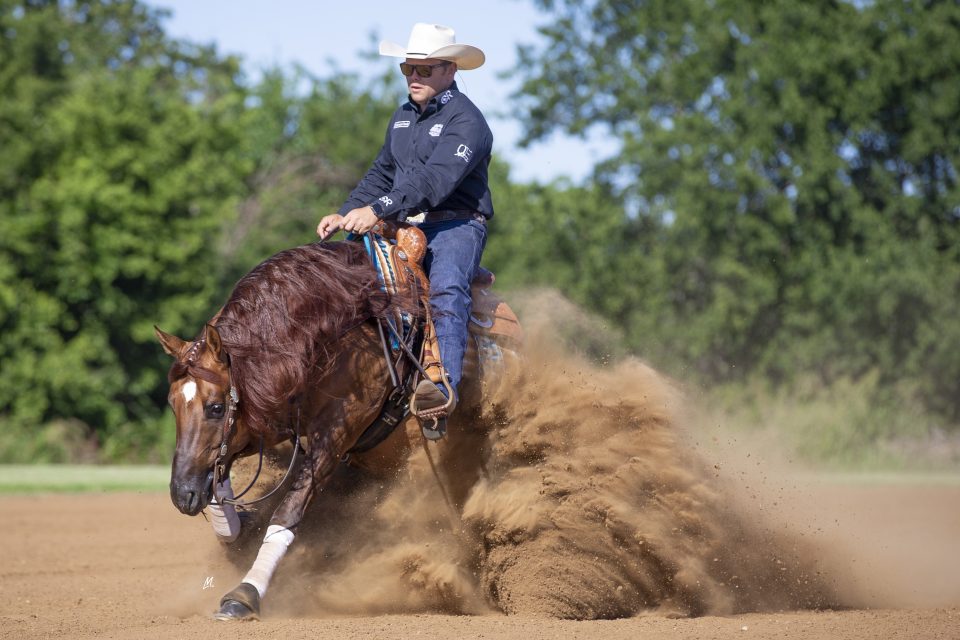Maintain your relationship with your customer, even when their investment turns out differently than expected.
By Jennifer Paulson

Helping your customers find and purchase the perfect horse is likely a big part of your business, not to mention an exciting task, especially when it’s one for you to show yourself. When the horse market is high, even an entry-level Rookie or youth horse can require substantial investment from your customer, not to mention the climbing and ongoing expenses of keeping a horse in training and maintaining its care.
When that investment goes south—whether because of injury or a misjudgement in the horse’s talent level or even just your roster of horses changing—it can cause frustration and disappointment for your customers. Those can be difficult emotions to manage, but there are ways to make the blow a little softer and even to turn the situation into a positive.
Here, NRHA Professionals Sebastian Petroll and the late Bob Avila shared how they’ve managed these situations to maintain successful, positive relationships with their customers, but also to ensure that the horse winds up in the best place possible in three parts:
Part 1: Manage Expectations and Voice Your Concerns
Part 2: Assess Risk Tolerance and Acknowledge Your Responsibility
Explore All Options
The best thing about the current horse industry is there are many places for horses to find a great fit, whether it be as a reiner at a different level or in a tangential event like ranch riding or working cow horse—or even in a completely different space as a rope horse or a handy trail horse.
“We try to lay out all the options,” Petroll says. “Just because a horse can’t be a Level 4 futurity horse doesn’t mean he’s worthless. There’s always a place to find a good fit.”
Avila agreed and says that pros are wise to build a network of professionals outside reining to help place horses in the best spot for their talents.
“I’ve always been fortunate in that I competed in multiple events, so a horse that didn’t work out in my reining program could go to another part of my program,” Avila shared. “In this age of specialization, that’s a little less common. So having a group of trainers in different disciplines who are similarly minded in their training and business practices can be a great way to find the right spot for a customer’s horse.”
Bonus: Your network can send you horses that don’t fit their program but might fit yours.
If your customer decides to sell the horse, they might see how hot the market is and think the sky is the limit for pricing. It’s your responsibility to have an honest conversation about how pricing and commissions work, determine how long they can keep a horse that’s for sale, and explore pricing in different disciplines.“We’re in a good market,” Petroll says. “But it’s important to explain to customers that some horses that aren’t making the cut won’t go for the same prices as horses that are living up to expectations. Owners feel like every horse should bring a lot of money right now, but the prices vary by discipline and category of horse. The horse has to fit the category to get the best pricing. If you have a filly that’s 13.2 hands and isn’t very good-minded, she’s not going to be easy to sell at a high dollar.”
It might be easy to get complacent during a strong market. Your barn is full, so why make the effort to go through the process of moving a horse to another situation rather than just kicking him out?
“I don’t know many trainers who have room in their barns,” Avila related. “Everyone is full. But you have to think about what’s right for the horse and for your future. There are 100 different ways to address the situation rather than just kicking the horse out of your barn. Think about your customer service and what will possibly keep that customer in your barn for the long haul, with a different horse, especially if these customers are all-in on reining. By offering solutions, you help your customer, you help the horse, and you build your reputation.”
Read the rest of this article at the links above.



